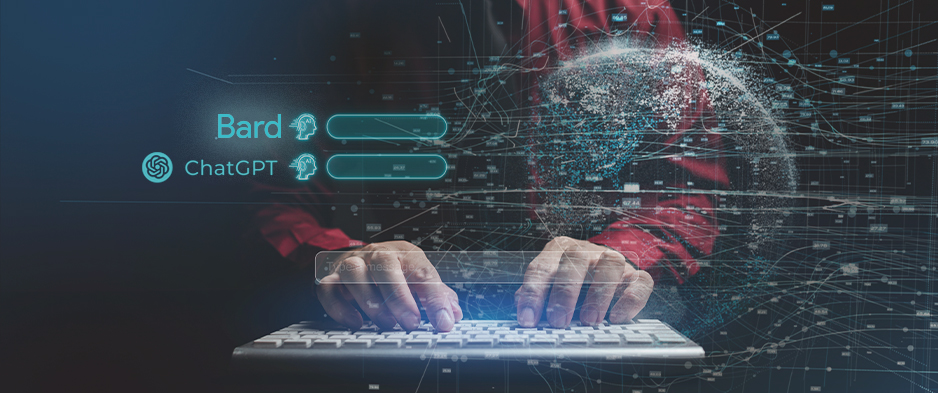We’ve already talked about ChatGPT’s potential impact on the industry. A new generative AI software has come out: Google Bard. While the two services are similar, we’ve identified some key differences between the two technologies.
Comparison between ChatGPT and Google Bard: the main differences
Pricing
Let’s start from the pricing of the two software. The basic version of ChatGPT is free and has a limit of 100 questions per day. For a more premium service, ChatGPT Plus is available for around $20 per month and offers its subscribers access to GPT-4 with 50 messages every three hours, as well as new features and faster response times. Google Bard is free with an unlimited number of questions. The company, as with other products, profits primarily from advertising.
Technology and architecture
Both Google Bard and ChatGPT use advanced machine learning techniques and neural networks. However, they differ in several aspects related to the design approach. ChatGPT uses the pre-trained transformer (GPT) generative architecture, an advanced natural language model capable of creating human-like text and content. These models, in fact, evaluate the relevance of each word in the sentence and use transformers to determine the text characters most likely to be displayed after text entry.
Google Bard is based on PaLM 2 technology. Like GPT, PaLM 2 uses transformer architecture to process data and predict the next sequence of words. But unlike GPT, Bard has managed to improve aspects such as image generation, encoding and translation.
Natural language processing
One of the main differences between ChatGPT and Google Bard concerns language processing. On the one hand, ChatGPT stands out for its excellent understanding of how the language works and the meaning of what users ask for. This is because the GPT model is “trained” on much of the textual content of the Internet. Furthermore, he also understands instructions such as staying on topic and being concise. All this makes the software excels at natural language processing.
Bard operates a little differently. Google’s software, in fact, does not rely completely on NLP to process people’s input and generate the desired output, but examines a wide range of documents and websites in search of relevant information. It then uses this information to produce creative and contextually relevant information to the request.
Machine learning
Regarding the machine learning capability and process, ChatGPT leverages a dataset generated from texts collected in large volumes on the Internet. However, this also entails a limit, as the information used to generate the answers is limited to the date in which the reference texts were collected. Additionally, ChatGPT’s machine learning algorithms are updated based on user feedback.
The learning and training data used by Google Bard comes from several sources. In addition to information that is publicly available online (such as that used by ChatGPT), Google also uses licensed data. While improving its machine learning and text generation capabilities, it employs specific programming and translation examples.

